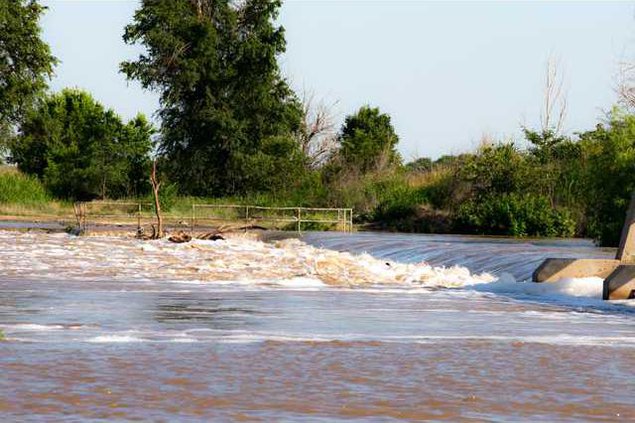Cheyenne Bottoms is a prairie pot-hole area about 41,000 acres in size. It is divided into several different plots of ground including the KDWP marsh, the Nature Conservancy marsh, Hoisington Duck Club and some other private individual pieces of ground. You can recall the stir that occurred when a private landowner was going to drill an oil well in the basin. That is his right on his land. I don’t know if he did or not—but we have never seen any ill effects if he did.
Each of the land owner/managers has a specific goal for their property. Nature Conservancy doesn’t allow hunting, and their main focus is grassland and shore birds. Waterfowl are secondary in importance to them. The recent excess rainfall has resulted in a huge overgrowth of cattails which makes life tough for all the birds. The Conservancy would prefer to let “nature take its course” but that isn’t possible with no natural inflow and egress of clean water. Living in the middle of a concentrated farming area changes the character of the water that accumulates in the marsh. This marsh is also (as is the KDWP marsh) downstream from the Hoisington sewer lagoon and storm water storage area. A flood (like 2007) puts huge amounts of nitrogen rich water, pesticides and herbicides in the marsh. It will be necessary to spray the cattails (which is a difficult second choice) to initiate control. It is too wet to get in and disc or till the marsh as is possible in dry years. They are developing a system to be able to draw down the water in certain areas and work the land more efficiently. Their view of their marsh is in much larger segments of time than even human lives—it may be our grandkids that see the best solution.
The duck club has a huge cattail problem. We started a water control system and will see how dry we can get some areas. We had a brilliant idea about burning cattails a few years ago and lost a very nice pickup in the process. Duck hunters aren’t firemen.
The KDWP marsh also has a huge cattail explosion. The main focus of this marsh is for hunting waterfowl. You can see the concrete bunkers that were built many years ago to facilitate hunting parties. I can remember standing in line at 4:30 in the morning to draw a bunker. Those days are long gone. Most of them are partially filled with water and trap lots of snakes and critters. Brian has saved lots of little lives by making rounds on these bunkers and fishing out the trapped inhabitants.
The KDWP marsh has a series of canals and pumps and very definite pools. It is possible to draw down water and dry the land for management if it doesn’t rain too much. It has rained too much this year. Another problem is the huge amount of silt that comes in from the Arkansas and Walnut when it floods. The silt accumulates at the corners and around the pump area and has to be physically removed. You can see the huge machine being driven by a tiny lady—don’t mess with her! It isn’t legal to remove any dirt from the marsh. The process of digging 10-12 ft. ditches along the edges of the pool leaves a lot of dirt piled along the roadway. That dirt in conjunction with weeds/grass growth essentially eliminates viewing and photography in lots of areas. There are some areas that will be open all the time, but you can’t see as much now as we could a few years back. Your best bet is to put on camo and spray for ticks and mosquitoes and hide along the canals. I have some nice Green-winged Teal photos in these difficult areas using that process. No food plots have been planted due to high water. This will ultimately affect waterfowl hunting since the marsh will have no food source. I suspect it will be 3-5 years before some order can be restored. KDWP also plans on spraying some of the cattails. There is a bad weed called fragmites that is a fierce invader in the marsh. This requires some degree of constant management.
I am certain that the fall migration will occur as usual. Apparently the Snow Geese have destroyed a lot of their own nesting ground up north and will be fewer in number. A recent law prohibits outfitters from guiding on public lands. The game wardens seem to approve of that statute. We will still see our Whoopers, Ducks, Geese and Sandhill Cranes. A special thanks to the owner/managers that work so hard to keep our land beautiful. It isn’t easy or cheap.
Doc
Marsh Musings
Trouble in our Marsh!





